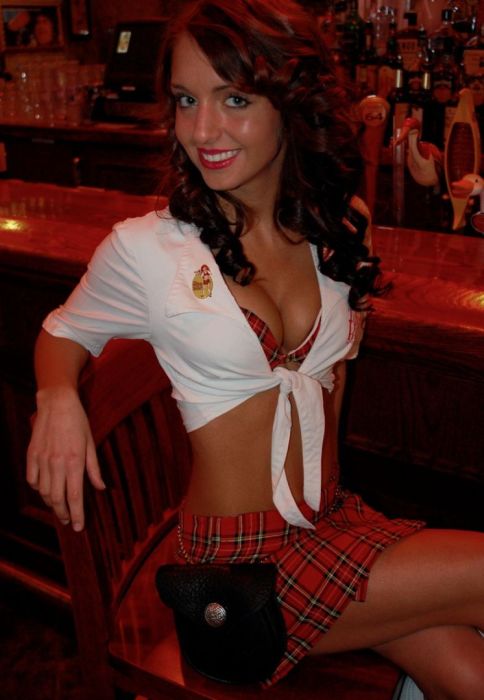|
|
Girl Wearing A Kilt
|
Today there are also tartans for districts, counties, societies and corporations. There are also setts for states and provinces; schools and universities; sporting activities; individuals; and commemorative and simple generic patterns that anybody can wear.
Setts are always arranged horizontally and vertically, never diagonally (except when adapted for ladies' skirts). They are specified by their thread counts, the sequence of colours and their units of width. As an example, the Wallace tartan has a thread count given as "K4 R32 K32 Y4" (K is black, R is red, and Y is yellow). This means that 4 units of black thread will be succeeded by 32 units of red, etc., in both the warp and the weft. Typically, the units are the actual number of threads, but as long as the proportions are maintained, the resulting pattern will be the same. This thread count also includes a pivot point indicated by the slash between the colour and thread number. The weaver is supposed to reverse the weaving sequence at the pivot point to create a mirror image of the pattern. This is called a symmetrical tartan. Some tartans, like Buchanan, are asymmetrical, which means they do not have a pivot point. The weaver weaves the sequence all the way through and then starts at the beginning again for the next sett.
Setts are further characterized by their size, the number of inches (or centimetres) in one full repeat. The size of a given sett depends not only on the number of threads in the repeat, but also on the weight of the fabric. This is because the heavier the fabric the thicker the threads will be, and thus the same number of threads of a heavier-weight fabric will occupy more space. The colours given in the thread count are specified as in heraldry, although tartan patterns are not heraldic. The exact shade which is used is a matter of artistic freedom and will vary from one fabric mill to another as well as in dye lot to another within the same mill.
Tartans are commercially woven in four standard colour variations that describe the overall tone. "Ancient" or "Old" colours may be characterized by a slightly faded look intended to resemble the vegetable dyes that were once used, although in some cases "Old" simply identifies a tartan that was in use before the current one. Ancient greens and blues are lighter while reds appear orange. "Modern" colours are bright and show off modern aniline dyeing methods. The colours are bright red, dark hunter green, and usually navy blue. "Weathered" or "Reproduction" colours simulate the look of older cloth weathered by the elements. Greens turn to light brown, blues become gray, and reds are a deeper wine colour. The last colour variation is "Muted" which tends toward earth tones. The greens are olive, blues are slate blue, and red is an even deeper wine colour. This means that of the approximately 3500 registered tartans available in the Scottish Tartans Authority database as of 2004 there are four possible colour variations for each, resulting in around 14,000 recognised tartan choices.
|
|









